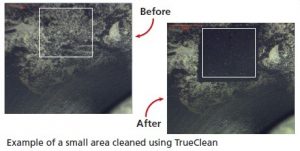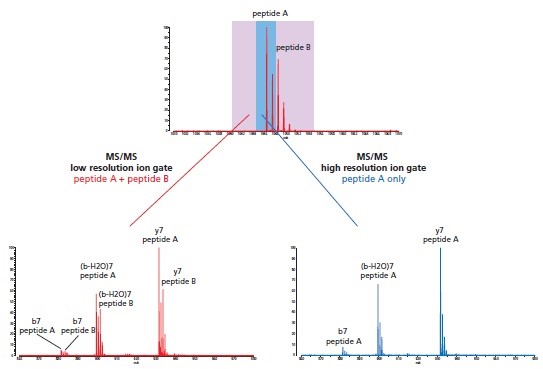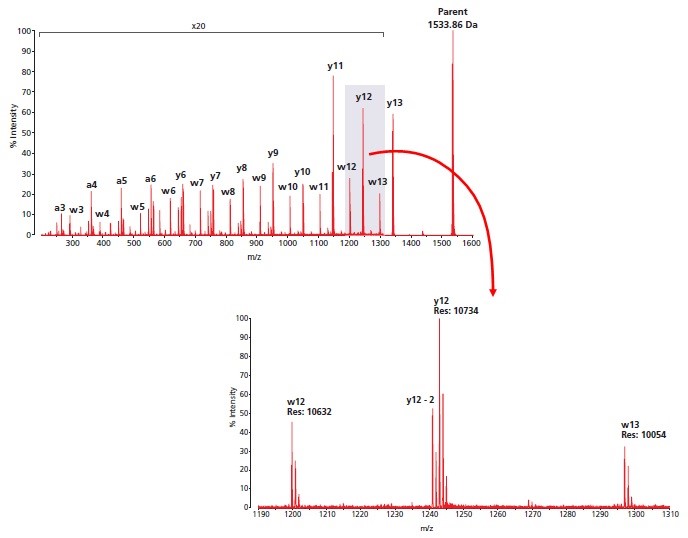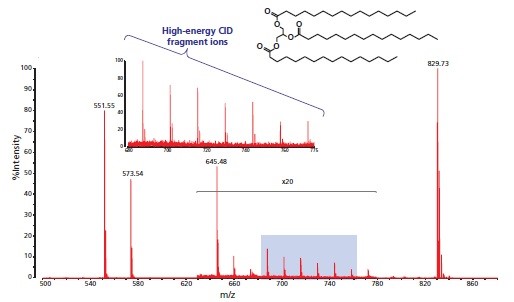MALDI
MALDI (matrix-assisted laser desorption/ionization) is an ionization technique that uses a UV-laser energy absorbing matrix to create ions from large molecules with minimal fragmentation. It can be applied to analysis of biomolecules and large organic molecules which can be fragile and fragment under standard ionization methods. MALDI imaging enables direct detection of protein, peptides, lipids, small molecule APIs and metabolites from tissues. It allows the measurement of compound distribution in analyzed cross-section providing topographical image of compound accumulation.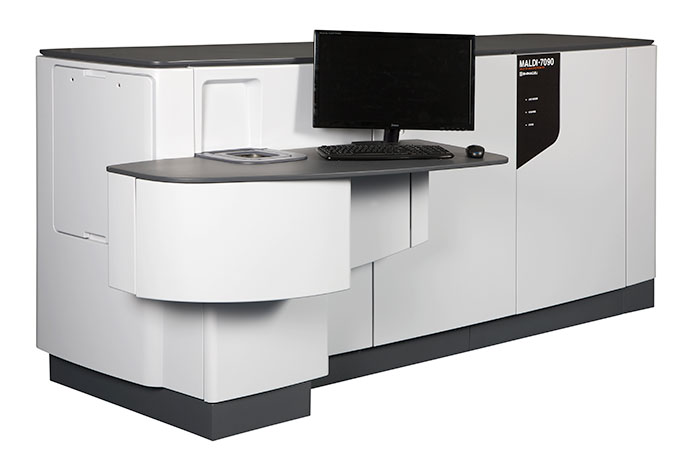 A true multi-user high-performance MALDI TOF-TOF Mass Spectrometer – Shimadzu MALDI-7090 is targeted for proteomics and tissue imaging. It combines Shimadzu’s extensive MALDI TOF-TOF mass spectrometry expertise with novel patented technology to provide ultimate performance in identification and structural characterization of biomolecules.
A true multi-user high-performance MALDI TOF-TOF Mass Spectrometer – Shimadzu MALDI-7090 is targeted for proteomics and tissue imaging. It combines Shimadzu’s extensive MALDI TOF-TOF mass spectrometry expertise with novel patented technology to provide ultimate performance in identification and structural characterization of biomolecules.
Some of the features of 7090 MALDI include:
A source design like no other:
The MALDI-7090 includes a number of proprietary features to improve sensitivity and productivity.
Wide Bore ion Optics: Consisting of unique wide-bore extraction optics, the MALDI-7090 ion optics are designed to maximize ion transmission and minimize source contamination over time.
Ultra fast Laser: Shimadzu’s proprietary solid-state UV laser, designed specifically for the MALDI-7090, delivers true 2kHz acquisition speed in all modes. The added benefits of variable beam focus and long lifetime maximize reliability and broad-range applicability.
HD sample viewing: The MALDI-7090 incorporates the latest state-of-the -art camera technology to deliver high-quality full HD color images of the sample with 10µm viewing resolution, software-controlled variable focus and long-life LED illumination.
TrueCleanTM: Optimal performance of the MALDI-7090 source is maintained using TrueClean – a novel and fully automated source cleaning process. TrueClean cleans the source electrodes by redirecting the UV laser onto their surface and desorbing any contaminant material. This method is highly efficient and does not require source removal or venting.
Hyper-MS2:
The MALDI-7090 sets a new standard in MS/MS acquisition. Several novel and exclusive technologies have been combined to create Hyper-MS2delivering:
High resolution ion gating for accurate precursor ion selection
Unparalleled MS/MS resolution achieved using patented axial spatial distribution focusing: ASDFTM.
High and low energy fragmentation maximizing the amount of information extracted from a sample
High-resolution ion gate:
The MALDI-7090 is equipped with a dual wire-grid high resolution ion gate.
Compounds of similar nominal mass may produce MS/MS spectra that contain fragment ions from several precursors if not gated correctly. However, the high-resolution ion gate in the MALDI-7090 allows the individual gating of species close in nominal mass thus producing distinct fragment ion spectra.
Axial Spatial Distribution Focusing – ASDF:
ASDF is a Shimadzu patented technology that enables unparalleled resolution in MS/MS acquisitions. Through correction of the axial spatial distribution of the ions generated, the mass resolution is significantly increased and becomes essentially independent of the laser power used to ionize the sample.
With ASDF, the MALDI-7090 can achieve mass resolution of 10,000 FHWM – unobtainable through pulsed extraction and ion optics alone.
High- and low-energy fragmentation:
High-energy CID:
MS/MS fragmentation in the MALDI-7090 is true high-energy CID (HE-CID).
Ions enter the collision cell at 20keV extraction energy. Furthermore, collisions with helium rather than heavier gases (air or argon) result in the most efficient generation of ions only associated with HE-CID (e.g.: peptide side –chain and lipid backbone fragmentation).
MS/MS fragmentation is further enriched by retaining all of the metastable decay ions through the reflectron analyzer, maximizing the amount of information extracted from each sample.
Low-energy fragmentation (metastable decay):
The MALDI-7090 can also be used in low-energy fragmentation mode without collision gas. Here the fragmentation relies on spontaneous metastable decay of the precursor and exhibits low-energy type ions.

